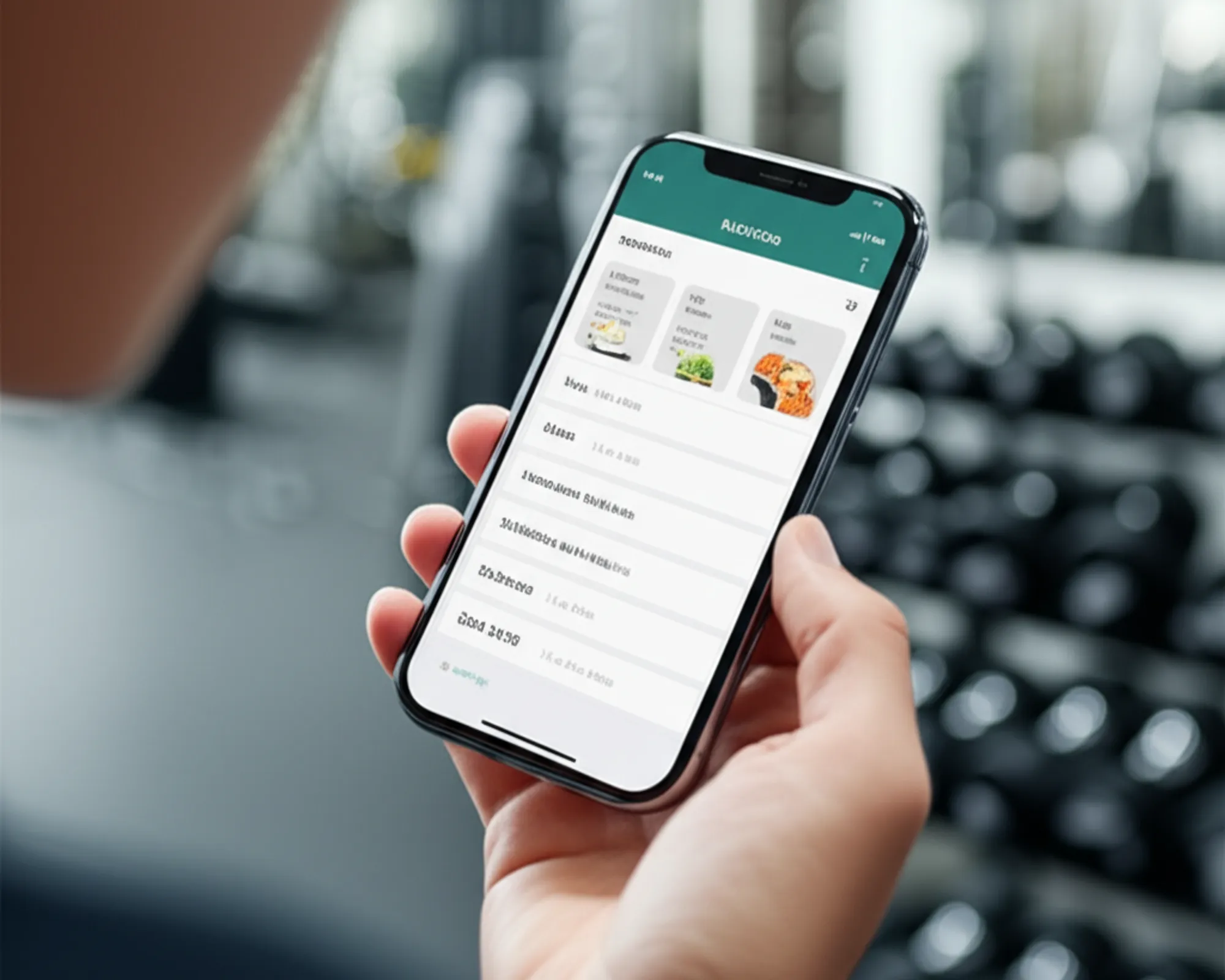Do You Really Need to Track Macros for Gym Results?

The gym floor is a battlefield of iron, sweat, and ambition. You push your limits, chase personal bests, and visualize the physique you’re striving for. But beyond the grunts and heavy lifts, there’s a quieter, equally crucial component to achieving those coveted gym results: nutrition. Specifically, the question often arises, "Do you really need to track macros for gym results?" It’s a topic that sparks passionate debate among fitness enthusiasts, with some swearing by its precision and others finding it overly restrictive. Let's dive deep into the world of macronutrient tracking, exploring its benefits, drawbacks, and whether it’s truly essential for your fitness journey.
What Are Macros, Anyway?
Before we dissect the "why," let’s clarify the "what." Macronutrients, or "macros," are the three primary components of food that your body needs in large quantities for energy, growth, and repair.
- Proteins: The building blocks of muscle, enzymes, and hormones. Essential for muscle repair and growth. Found in meat, fish, eggs, dairy, and legumes.
- Carbohydrates: Your body’s primary source of energy. Fuels workouts, brain function, and daily activities. Found in grains, fruits, vegetables, and starchy foods.
- Fats: Crucial for hormone production, nutrient absorption, and long-term energy. Found in nuts, seeds, avocados, olive oil, and fatty fish.
Tracking macros involves meticulously recording the grams of protein, carbohydrates, and fats you consume daily, often aiming for specific ratios or targets based on your fitness goals.
The Case For Tracking Macros: Precision and Progress
For many, tracking macros is a game-changer, offering a level of control and insight that intuitive eating simply can’t match.
- Unlocking Specific Goals: If you have very precise goals – say, a bodybuilder aiming for extreme leanness before a competition, or an individual trying to gain a specific amount of muscle mass while minimizing fat gain – macro tracking provides the precision needed. It ensures you’re consistently in a caloric surplus for muscle gain or a deficit for fat loss, while also hitting optimal protein targets for recovery and growth.
- Understanding Your Food: Tracking forces you to become intimately familiar with the nutritional content of what you eat. You learn exactly how much protein is in that chicken breast, how many carbs are in a banana, and how fats add up in your daily diet. This knowledge is invaluable, even if you don't track forever.
- Optimizing Performance and Recovery: Adequate carbohydrate intake fuels intense workouts, while sufficient protein ensures muscles repair and grow effectively post-exercise. By tracking, you can fine-tune your intake to support peak performance and rapid recovery, leading to better sessions and faster progress.
- Breaking Plateaus: When progress stalls, macro tracking can be a powerful diagnostic tool. Are you eating too much? Too little? Not enough protein? Adjusting your macro split can often be the key to breaking through stubborn plateaus.
- Accountability and Consistency: Knowing you have daily targets can provide a strong sense of accountability. This structured approach helps foster consistency, which is paramount for long-term gym results.
Who Benefits Most from Macro Tracking?
While beneficial for many, certain individuals will find macro tracking particularly useful:
- Competitive Athletes & Bodybuilders: For those whose physique or performance is their profession, precision is non-negotiable.
- Individuals with Specific Body Composition Goals: Whether it’s rapid fat loss, aggressive muscle gain, or maintaining a shredded physique.
- People Struggling with Progress: If you’re consistent in the gym but not seeing the results you expect, macro tracking can reveal dietary shortcomings.
- Those Learning About Nutrition: It's an excellent educational tool for understanding food and its impact on your body.
When Might You Not Need to Track (or Track as Strictly)?
Macro tracking isn't a universal panacea, and for some, it can become an obsessive and unsustainable practice.
- Beginners: For someone just starting their fitness journey, simply focusing on eating whole, unprocessed foods and getting adequate protein is often enough to see significant initial results. Overwhelming them with macro tracking can be counterproductive.
- General Health & Wellness: If your primary goal is general health, maintaining a healthy weight, or simply feeling good, a more intuitive approach focused on balanced meals and mindful eating might be more sustainable and enjoyable.
- Maintenance Phases: After reaching a desired physique, many find that a less stringent approach, utilizing the knowledge gained from tracking, is sufficient for maintenance.
- Mental Health & Stress: For individuals prone to obsessive tendencies or those who find strict tracking causes stress, anxiety, or disordered eating patterns, it's definitely not the right approach. Your mental well-being should always take precedence.
- Lack of Time/Desire: Tracking takes time and effort. If you don't have the bandwidth or simply don't enjoy the process, there are other effective strategies.
Alternatives to Strict Macro Tracking
If the idea of weighing every gram of food sounds daunting, don’t despair. There are other effective approaches:
- Portion Control: Using your hand as a guide (e.g., palm for protein, cupped hand for carbs, thumb for fats) can be a simple way to manage portion sizes without needing a scale.
- Mindful Eating: Paying attention to hunger and fullness cues, eating slowly, and savoring your food can lead to better dietary choices and portion management.
- Focus on Food Quality: Prioritizing whole, unprocessed foods automatically tends to lead to better macro distribution and nutrient intake without explicit tracking.
- Rule-Based Eating: Following general guidelines like "eat protein with every meal," "fill half your plate with vegetables," or "limit processed sugars" can be highly effective.
How to Start (If You Choose To)
If you decide to give macro tracking a try, here's a brief guide:
- Calculate Your TDEE (Total Daily Energy Expenditure): Use an online calculator to estimate your daily calorie needs based on your age, weight, height, activity level, and goal (lose, gain, or maintain).
- Determine Your Macro Split: Based on your goals, allocate percentages to protein, carbs, and fats. A common starting point for muscle gain/fat loss is 30-40% protein, 30-40% carbs, and 20-30% fat.
- Use an App: Apps like MyFitnessPal, Cronometer, or LoseIt make logging food relatively easy.
- Weigh Your Food: For accuracy, especially initially, use a food scale.
- Be Patient and Consistent: It takes time to get used to, and results aren't instant.
The Verdict: Do You Really Need To?
The answer, like most things in fitness, is nuanced: No, not everyone needs to track macros for gym results, but for many, it can be a highly effective tool to accelerate and optimize their progress.
For beginners, focusing on consistent training, adequate sleep, and a generally healthy, protein-rich diet will yield fantastic initial results. As your goals become more specific or your progress plateaus, macro tracking becomes an increasingly valuable asset in your arsenal. It’s a tool – a powerful one – but just one of many. The best approach is the one you can adhere to consistently, that supports your physical goals without compromising your mental well-being. Ultimately, understanding your body and what fuels it best is the most important lesson, whether learned through meticulous tracking or intuitive eating.


